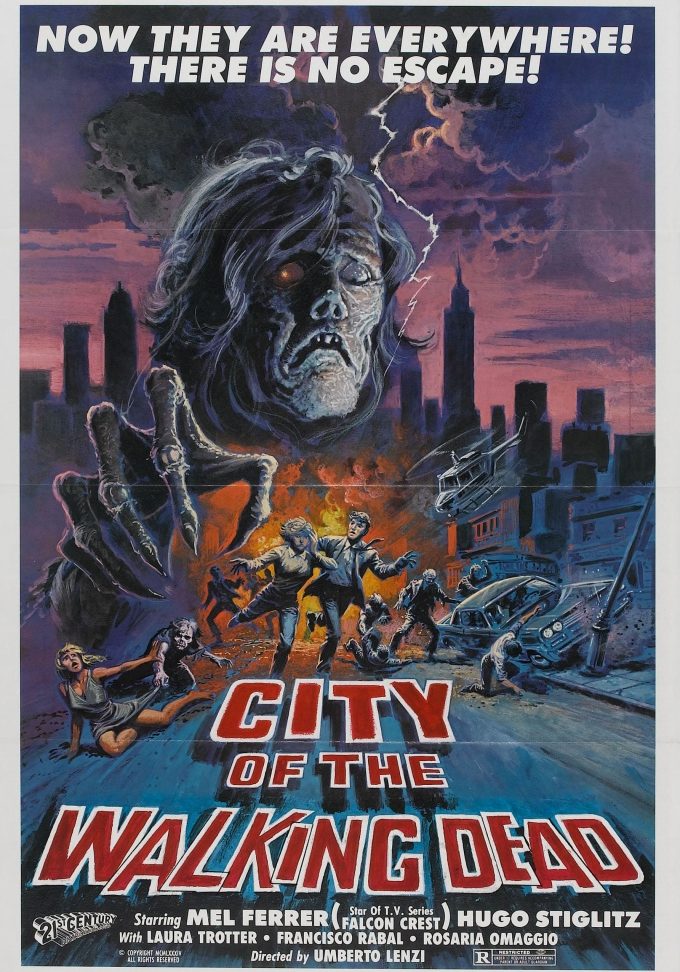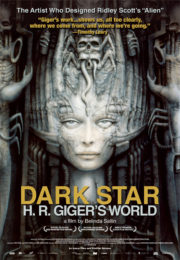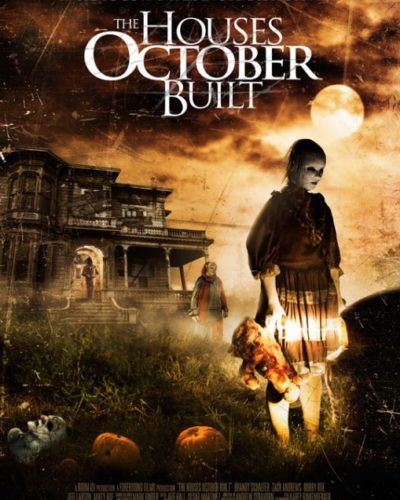“When the Dead Walk, The Living Must Run” – Navigating the Desolate Streets of ‘City of the Living Dead’
In the realm of horror, few films capture the raw, guttural tone that so defines the genre like “City of the Living Dead” (1980). Directed by Italian maestro Lucio Fulci, this movie, nestled between the folds of reality and nightmare, makes an attempt to terrify its audience with a visceral onslaught. The film takes us to the eerie small town of Dunwich, where a priest’s suicide flings open the gates of Hell, setting in motion a series of macabre events that lead to the dead emerging from their graves. With an impending deadline to close the gate before All Saints Day or face the annihilation of the living, a psychic, a reporter, and a handful of town survivors must navigate a gauntlet of horrors. This spoiler-free veneer barely scratches the surface of the bleak and blood-caked journey that awaits the viewer.
Clouds of Dread: Building the Atmosphere
“City of the Living Dead” flourishes when it comes to enveloping the audience in its bleak and oppressive atmosphere. From the opening frames, the film is draped in an ambience of inexorable doom. Fulci’s directing style, focused on lingering shots of desolate locations and rotting flesh, is amplified by a haunting soundtrack that creaks and moans as though the very soul of the film is in anguish. Compositions of discordant notes and hollow winds add to an air so thick with tension, you could use a butcher’s knife to cut it.
The blend of practical effects and gore pushes the film beyond mere creepy visuals into a realm where squeamish audiences may find themselves watching through laced fingers. Effective use of shadows and minimal lighting intensifies the mounting dread, while abrupt camera cuts to decomposing faces leave a lasting impression of terror.
Grisly Symphony: Soundscapes and Screams
The score of “City of the Living Dead” is an unsung hero in its fear factor arsenal. Composer Fabio Frizzi’s eerie melodies crawl under the skin, punctuated by shocking jolts of noise, making the watcher’s heart thump in nervous anticipation. Sound effects are used sparingly but effectively, with an emphasis on the spine-tingling groans of the undead and the visceral squelches of terror inflicted on the victims. Moments of silence are just as powerful, often serving as the calm before the storm of screams that inevitably follow.
Through the Eyes of the Doomed: Casting Shadows
The performances in “City of the Living Dead” fluctuate from hauntingly convincing to over-the-top hysteria. Notably, Catriona MacColl as the psychic Mary Woodhouse, carries the weight of impending doom convincingly, compelling viewers to root for her survival. Other performances elicit a mix of empathy and disbelief, yet this uneven dramatic range doesn’t diminish the palpable sense of horror they collectively contribute to.
The characters, while lacking in-depth development, function more as vessels for the audience’s fears – their terror is palpable, their desperation infectious. The mournful expressions and frenzied actions are in line with Fulci’s operatic sensibilities, showcasing human fragility amidst supernatural disasters.
Reflections in a Dark Mirror: Themes and Impact
Lucio Fulci was never one to shy away from using horror to elucidate larger societal fears. Despite its supernatural wrapper, “City of the Living Dead” taps into the fear of the unexplained and the inevitability of death that resonate on a universal level. Through its apocalyptic vision, the film offers a commentary on the fragility of our existence and the thin veil that separates life from the hereafter.
In terms of fright delivery, the film opts for a medley of gut-wrenching gore and subtle psychological fear – though perhaps leaning more heavily on the former. The infamous drill scene exemplifies Fulci’s dedication to shock value, which, while effective, can sometimes overshadow the subtle buildup of dread that would otherwise provide a more rounded horror experience.
Final Reckoning: Is “City of the Living Dead” a Fulci Fright Fest Worth Witnessing?
“City of the Living Dead” stands as a testament to horror craftsmanship that targets the innate fear of death and decay. It’s a film coated in the grime of its genre – unnerving, gory, and occasionally inconsistent – yet it holds a certain allure for viewers who prefer their horror served raw and unfiltered. Fans of Italian horror and Fulci’s signature style will revel in its crude and shocking moments, while it may not cater to those with a penchant for slick, modern scare tactics or intricate plot development.
While it may not reinvent the wheel, the movie’s place in horror history is cemented by its relentless atmosphere and unwavering commitment to terror. In the end, “City of the Living Dead” offers more than enough for a horror aficionado to sink their teeth into, or for the profane to flee from. The film is certainly not for the faint of heart, and those with an aversion to graphic content should proceed with caution. For everyone else, welcome to the derelict streets of Dunwich – try not to lose your way, or your mind, as the dead claim their dominion.




